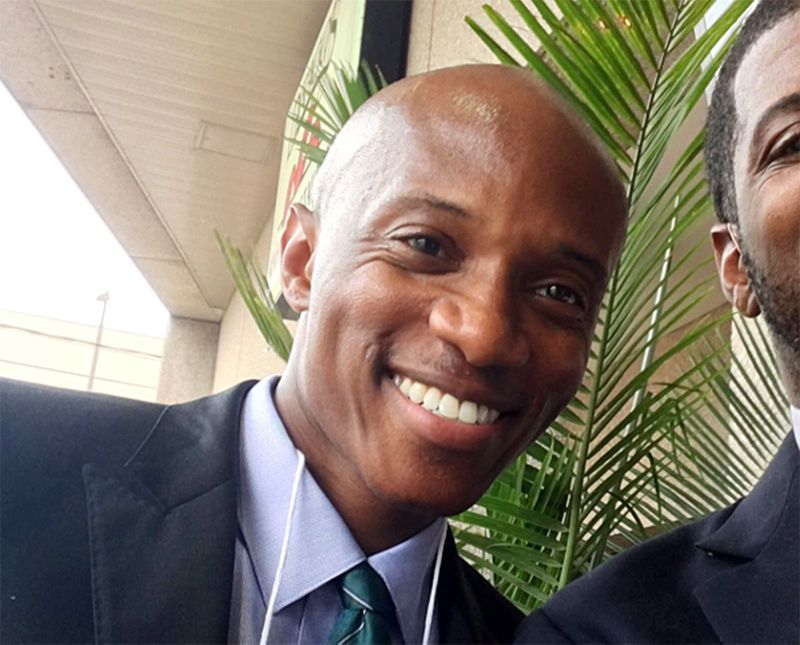Opportunity Missed to Address Suicide Issue
150 Staffers Protest Choice for WNYC Editor
. . . Staffers Cite ‘Urgency, Outrage and Duty’
. . . ‘Allow Us to Assure You, We Hear You’

Opportunity Missed to Address Suicide Issue
When Journal-isms reported the medical examiner’s conclusion last week in the death of Washington Post reporter Darran Simon, it was never imagined on this end that that would be the only way readers would know what the examiner ruled.
Simon, an African American rising star at the Post who died in April, received a 1,211-word, deadline-written obit in the Post, with an explanation that “a determination of the cause of death is pending further tests.” When the determination cited suicide, the Post was silent, and so were other news organizations.
The Post was asked to explain its silence Monday. Its official response was, “We do not report non-public suicides of non-famous people. (We did run an obituary for Darran.)”
The “nothing-to-see-here” approach not only conflicts with the Post’s own style book — at least in spirit — but misses an opportunity to educate the public on a tragedy that is increasingly affecting the Black community.
The Post style book says, “. . . In cases of violent or accidental death, we always consult the police or the medical examiner and use their version of the circumstances. We always include the fact of suicide or homicide. It is not possible to give a straightforward summary of a life that ends in suicide without mentioning the suicide.”
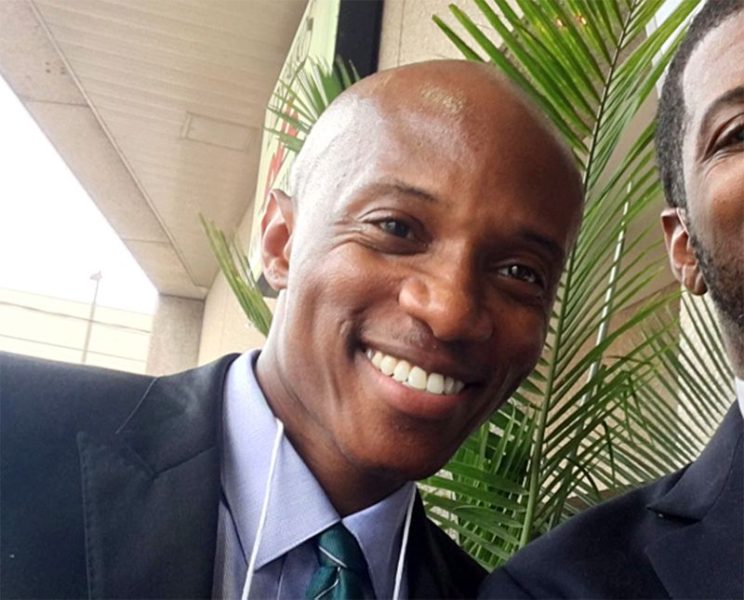
The Dart Center for Journalism and Trauma at Columbia Journalism School says, “Branding suicide as an untouchable topic has real dangers. We may need to know more about the causes of suicide rather than less: globally, more people die from suicide each year than from homicide and war combined.”
Bruce Shapiro, executive director of the center, told Journal-isms in April, “I would point to data from the CDC and American [Foundation] for Suicide Prevention indicating that suicide among African-Americans has risen about 20 percent since 2015 (although it’s still a far, far lower suicide rate than white Americans or Native Americans). And among youth, the rising rate of African-American suicide attempts is quite dramatic — black students’ suicide attempts actually are at a higher rate than whites.”
Suicide experts say to be careful in describing suicides so as not to inflame. Some readers said that merely reporting the medical examiner’s words — “The cause of death was by hanging and the manner of death was ruled a suicide” — was insensitive.
Internally, the Post, along with the News Guild, was compassionate in its April message announcing Simon’s death. It warned to seek help if one feels depressed, and provided contact information, even as it would not acknowledge that suicide was suspected.
Why not extend that benefit to the public?
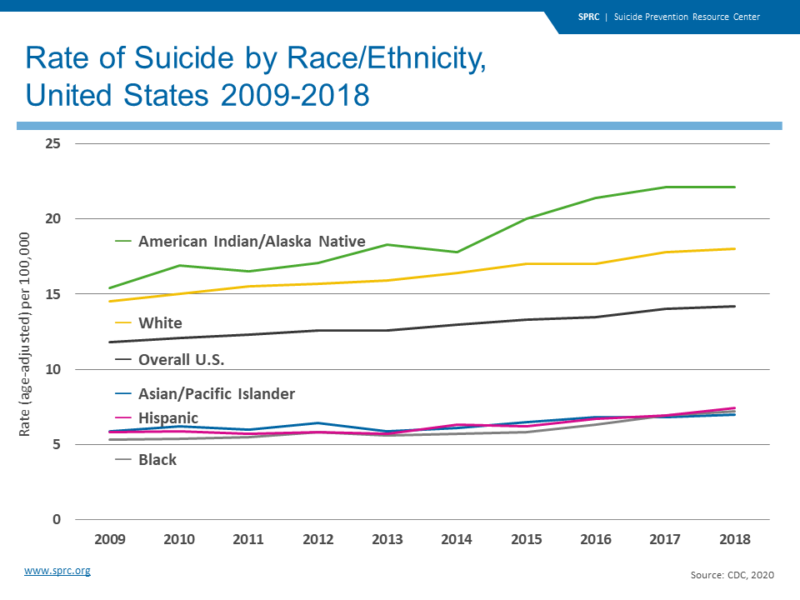
On Thursday, Post spokeswoman Kris Coratti explained the seeming contradiction with the Post’s own style book’s instructions to address the cause of death. “Yes — that is still in the Style book, and we followed that style in the obit. . . . Had they confirmed a cause of death at the time, we would have printed it. Hence my previous statement that we would not go back and update a cause of death for a non-public person.”
Newspapers provide a public record for researchers and readers. One former Post reporter, asked for reaction to the way the Post handled the situation, said, “I . .. don’t think it’s our job to protect friends and family from the truth, as painful as it may be.”
Peter Perl, a retired Post assistant managing editor, argued, “If you are going to make the serious decision to delve into the painful, unfathomable realm of suicide, I think you’re obligated to really make it as full an account as possible.”
William R. MacKaye, another Post alum, messaged, “It’s difficult to imagine a more obvious decision by Post biggies, perhaps abetted by the medical examiner’s office, to conceal the cause of death of a Post reporter whatever the Stylebook says.”
A fourth, former police reporter Nancy Lewis, cited the editorial mindset. “I think the local news report has been diminished so much there is no easy way to report the cause of death — which I think should be acknowledged considering the obit. Formerly, a ruling could have passed as a brief in the briefs column, very straightforward. With the current situation the only way to get a very short story in the paper is to [hang] a huge headline on it, much as they [do with] stories about shooting that they really don’t know anything about, except the fact that someone is dead. Rarely follow-ups on those stories, either.
“I didn’t know the young man but his death certainly seems to fit in with all the angst at the paper now,” said Lewis.
Our view: We owe it to ourselves and to the public to deliver any information that moves us toward the day that no suicide reports have to be written.
The National Suicide Prevention Lifeline provides 24/7, free and confidential support for people in distress, prevention and crisis resources for you or your loved ones, and best practices for professionals. 800-273-TALK (8255)

150 Staffers Protest Choice for WNYC Editor
The management of WNYC, the New York outlet that boasts it is the nation’s most listened-to public radio station, has been presented a letter of protest from 150 employees over its pick of Audrey Cooper (pictured below), editor of the San Francisco Chronicle, to be its next editor in chief.
WNYC was rocked by scandal in 2017, when John Hockenberry, host of WNYC’s “The Takeaway,” retired after complaints of sexual harassment and racially insensitive comments. In addition, WNYC host Leonard Lopate was fired for inappropriate behavior.
“Last fall, you asked us who we would want to lead WNYC’s daily news coverage,” the letter from the petitioners, delivered Tuesday, said. “We asked that they be a person of color, someone who knows New York, and someone who has experience in public radio.
“Unfortunately, you failed to meet a single one of our priorities in your hiring decision.”
 In a response to the staff letter, Goli Sheikholeslami, president and CEO, and Andrew Golis, chief content officer, wrote in part, “As we announced last week, we are moving forward with creating two new editor roles, and are in the process of building a race equity and inclusion group to work with management to make concrete changes.
In a response to the staff letter, Goli Sheikholeslami, president and CEO, and Andrew Golis, chief content officer, wrote in part, “As we announced last week, we are moving forward with creating two new editor roles, and are in the process of building a race equity and inclusion group to work with management to make concrete changes.
“We’d welcome a conversation on the other ideas you propose in your letter, in service of our larger shared mission of creating lasting positive change.”
In its announcement last month of Cooper’s hire, WNYC said, “Audrey transformed The Chronicle’s newsroom from one dominated by white men to one led by and predominantly made up of women, people of color, and/or people who identify as LGBTQ+. She recruited new talent aggressively, filled leadership positions with editors and journalists from backgrounds traditionally underrepresented in the Chronicle’s newsroom, and championed departments like the paper’s photo department that’s been celebrated for its industry-leading diversity. . . .”
The WNYC staffers argue that the diversity is mainly one of gender and sexual orientation, not race. The Chronicle is not listed among participants in the American Society of News Editors’ most recently published newsroom diversity survey, in 2018. ASNE is now the News Leaders Association [PDF].
. . . Staffers Cite ‘Urgency, Outrage and Duty’
This is the letter from WNYC staffers:
Dear Goli, Andrew, and Members of the Board,
We, the undersigned, are writing out of a sense of urgency, outrage, and duty to New York Public Radio as an institution with a clear mission to serve the most diverse metropolitan region in the world, one that so many of us helped build.
 Recent actions taken — and not taken — by NYPR management have not given us confidence in your commitment to this mission. (Pictured: Goli Sheikoleslami)
Recent actions taken — and not taken — by NYPR management have not given us confidence in your commitment to this mission. (Pictured: Goli Sheikoleslami)
Last fall, you asked us who we would want to lead WNYC’s daily news coverage. We asked that they be a person of color, someone who knows New York, and someone who has experience in public radio.
Unfortunately, you failed to meet a single one of our priorities in your hiring decision.
At the end of 2017, the station’s senior leadership lost the confidence of the staff and many board members after ignoring and covering up the harassment and bullying of many staffers, including Black women and other women of color. It was a painful moment that caused other staffers to come forward and bravely share their own experiences of feeling undervalued and mistreated as employees, as women, and as people of color. Management told us they were listening and that changes would follow. Many WNYC employees worked for months on committees tasked with rebuilding a more inclusive company culture.
 As Black and Brown communities are disproportionately affected by a global pandemic that has killed tens of thousands of New Yorkers and left millions out of work, and daily protests against racist police violence are spurring a reckoning with systemic racism in the U.S., we still have no Black leadership in our news department to meet this moment. (Pictured: Andrew Golis)
As Black and Brown communities are disproportionately affected by a global pandemic that has killed tens of thousands of New Yorkers and left millions out of work, and daily protests against racist police violence are spurring a reckoning with systemic racism in the U.S., we still have no Black leadership in our news department to meet this moment. (Pictured: Andrew Golis)
We have only one Black reporter and no Black editors who manage reporters. We missed an opportunity to make significant progress with the head of news hiring this month, and now our top three managers in charge of our news division — the Chief Content Officer, the new Editor-in-Chief, and the News Director — are all white.
We welcome your June 26 commitment to hire two editors quickly and we look forward to working with you and management to make these important additions to our staff. Much more, however, remains to be done.
To regain our confidence and trust in your commitment to our mission — and the staff we need to carry it out — we demand the following:
- Hire two Black reporters and two Black producers within the next 100 days. The urgency of the crises we are covering demands that NYPR act faster and bolder than it has been willing to act before.
- Develop and implement within 100 days a specific plan and budget to support and retain Black staff members. Among the reasons we have so few Black staff members is that many of those who joined us in years past did not stay. Despite pledges to retain and promote Black journalists, it is unclear what NYPR is doing to understand and address its past failures. What will WNYC do to support, invest in, and retain Black employees?
- Take immediate steps to make all hiring processes more transparent. The lack of transparency and the fact that our Diversity, Equity and Inclusion officer was not involved in the hiring process for the head of news means much more must be done. In the future, seats on the hiring committee should be reserved for the DEI Officer, and for someone who would be that person’s direct report.
- Meet with a committee of the undersigned within 14 days. We want to discuss the demands listed above as well as the need for more Black people and people of color in senior leadership positions throughout the organization. We want to talk about salary transparency, promotions, age discrimination, and many other issues that NYPR has ignored or neglected to address for years.
Andrew, in your June 12 email to us, you wrote: “We cannot have a newsroom with almost no editors of color and mostly white reporters covering one of the world’s most diverse cities. Even more specifically than that: given that anti-Black racism is our country’s most defining strain of systemic racism, we need more Black reporters, producers, and editors.”
Many of us at WNYC have heard this rhetoric countless times over recent years. Some of us have heard it for decades. But attempts to both diversify listeners and staff have only brought incremental change at best. We agree that we must focus on systemic racism in our reporting, but we must also look at the systemic racism within our own organization and take specific actions to change it.
. . . ‘Allow Us to Assure You, We Hear You’
The response from Goli Sheikholeslami, WNYC president and CEO, and Andrew Golis, chief content officer:
We appreciate your letter and the next steps you have requested, and we want first and foremost to be clear that we share your desire and your urgency to see real change at New York Public Radio. We know that you write from a place of deep love for this institution and the city and listeners we serve.
We agree wholeheartedly that building a more diverse and inclusive newsroom is one of our most urgent priorities. We also understand — more deeply than ever — that in the past these efforts have often fallen short, fueling a sense of disappointment and despair. Allow us to assure you: we hear you, and we understand that words are not enough if they are not followed by real action.
As we announced last week, we are moving forward with creating two new editor roles, and are in the process of building a race equity and inclusion group to work with management to make concrete changes.
We’d welcome a conversation on the other ideas you propose in your letter, in service of our larger shared mission of creating lasting positive change.
Please let us know who will represent the letter’s signees, and Gabriela will schedule a time for us to meet.
Have a restful holiday,
Goli & Andrew
Essence to Ask ‘Experts’ to Examine Charges
July 1, 2020
Anonymous Group Sees Black Women Betrayed
IRE Board Restores Leadership Diversity
N.Y. Times to Capitalize ‘B’ in ‘Black’

Anonymous Group Sees Black Women Betrayed
Update: Essence issued this statement on Thursday, July 2: “There was no interim CEO at ESSENCE Communications, Inc. (ECI), following the departure of Michelle Ebanks on March 31 until Richelieu Dennis appointed Caroline Wanga to this position on July 1. As owner, Dennis helped to lead the team along with the ECI senior leadership team, but never took on the roles or responsibilities of CEO. So he never stepped down from, resigned from or was replaced in any role.”
Essence Communications responded to scathing allegations of corporate misconduct and sexual misbehavior Tuesday by announcing that it is hiring “law firms and other independent external experts” to review the accusations and installing a new interim CEO to replace owner Richelieu Dennis in that role.
The statement from the publishers of the nation’s leading magazine for black women followed publication on medium.com of an essay by anonymous purported current and former Essence employees. That essay said, “Scores of talented Black women have been either wrongfully laid off or forced to resign from the company in the past two years.
“Essence’s C-suite leadership team strategically tells the market it ‘serves Black women deeply’ under the safe seal of 100% Black ownership, but for the Black women who [make up] over 80% of the company’s workforce, they are systematically suppressed by pay inequity, sexual harassment, corporate bullying, intimidation, colorism and classism. . . .”
The Medium piece specifically called out Dennis and other executives, accusing him of sexual improprieties and adding, “In the [latter] half of 2019, Richelieu tried to force Essence employees and contractors to sign non-disclosure agreements that exclusively [protect] his family from liability or disparagement after a string of wrongful layoffs and other potentially libelous business activity. . . . Richelieu’s wife Martha Dennis is the company’s Head of Human Resources, a blatant conflict of interest.”
The authors, calling themselves “#BlackFemaleAnonymous,” launched a petition on change.org demanding within five business days the “resignation of Richelieu Dennis, Owner & Chief Executive Officer of Essence Ventures (Essence Communications including Essence Magazine, Essence.com and Essence Festival), Michelle Ebanks, Essence Ventures board member and former Essence Communications CEO, Joy Collins Profet, Chief Operating Officer, and MoAna Luu, Chief Content Officer.”
We demand the immediate resignation of @Essence owner & Chief Executive Officer Richelieu Dennis, board members & former CEO Michelle Ebanks, Chief Operating Officer Joy Collins Profet, & Chief Content Officer MoAna Lu. #TakeBackEssence #EssenceFest pic.twitter.com/5RucCSRvGU
— Black Female Anonymous (@takebackessence) June 28, 2020
By Wednesday morning, the petition had exceeded 1,400 signatures and received sympathetic responses on social media that decried the purported behavior of a Black-owned business, with some saying they had heard such allegations over the years.
Essence declared on Monday, “the accusations are false and we fully deny them.”
 The company said Tuesday, “Caroline Wanga (pictured), who joined ESSENCE on June 29 as its new Chief Growth Officer, will step in as interim CEO of Essence Communications, Inc., to work with team leads across the organization and run day-to-day operations, as well as oversee the independent review process.”
The company said Tuesday, “Caroline Wanga (pictured), who joined ESSENCE on June 29 as its new Chief Growth Officer, will step in as interim CEO of Essence Communications, Inc., to work with team leads across the organization and run day-to-day operations, as well as oversee the independent review process.”
Wanga was Target’s chief culture, diversity and inclusion officer and VP of human resources before leaving for Essence in June.
Dennis bought Essence Communications in 2018 from Time Inc.,and formed a black-owned company to return Essence to black ownership.
Dennis is a Liberian-born entrepreneur who sold Sundial Brands, parent company of Shea Moisture and related personal care products, to consumer goods giant Unilever in 2017 for a large but undisclosed sum.

IRE Board Restores Leadership Diversity
Cheryl W. Thompson of NPR was re-elected board president of Investigative Reporters and Editors
Tuesday in a do-over election prompted by the board’s embarrassing election of an all-white executive committee.
Thompson, the first African American president in the history of IRE, founded in 1975, will have an African American vice president, Mark Rochester, editor in chief at Type Investigations, a nonprofit newsroom based in Manhattan.
Thompson, in her sixth year on the IRE board, has been president during the past two years. The board elects its officers, and the choice of Thompson was unanimous. The organization has 5,200 members worldwide.
“I’m thrilled to serve as president for a third term,” Thompson messaged Journal-isms. I’m looking forward to working with this dynamic group of journalists.” And to have Mark Rochester as the vice president means a lot to me. He brings so much to the table. The board is lucky to have him.”
As IRE explained in its announcement of the results, “During a month-long online voting process that concluded June 20, IRE members elected seven candidates to the board, including three Black members, increasing representation to a total of four. In addition, women hold a majority for the second consecutive year on the 13-member board.
“Following the announcement of election results, the newly constituted board elected officers on June 20. The process resulted in an all-white Executive Committee. On June 24, the Executive Committee announced that all five members would resign to pave the way for a new election of officers.”
- Doug Haddix, Investigative Reporters and Editors: IRE offers free resources to investigate police abuses and misconduct
N.Y. Times to Capitalize ‘B’ in ‘Black’
June 30, 2020
‘White,’ ‘Brown’ to Remain Lowercase
What the N.Y. Times Said in 1930 About ‘Negro’

‘White,’ ‘Brown’ to Remain Lowercase
The New York Times Tuesday announced that it will join the growing list of news organizations capitalizing the “B” in “black” to describe “people and cultures of African origin, both in the United States and elsewhere.”
It will not capitalize “white” or “brown” in discussing races of people, and all of the terms will be used as adjectives, not nouns, when referring to human groupings.
The Times decision is especially significant because the Times’ 1930 bow to demands to capitalize “Negro” is viewed as a milestone in African Americans’ attempts to empower themselves through language.
The note to employees from Executive Editor Dean Baquet and Phil Corbett, associate managing editor for standards, said, “We have talked to more than 100 staff members to get their views, reviewed the arguments that have been made over many years, and consulted with colleagues at other news organizations. The feedback has been thoughtful and nuanced, with a wide range of opinions among colleagues of all backgrounds.”
In an Apple longform podcast posted Friday, Baquet described the newsroom discussion on capitalization as a “fierce debate” with not all younger black staffers agreeing that the word should be capitalized.
 National Editor Marc Lacey (pictured) who led that discussion, messaged Journal-isms on Tuesday, “There were many conversations over this and many views, and most people in the newsroom who I spoke to supported it, especially Black journalists. But not everybody thought it was an essential style change and some people expressed discomfort with having a different style for Black and white.”
National Editor Marc Lacey (pictured) who led that discussion, messaged Journal-isms on Tuesday, “There were many conversations over this and many views, and most people in the newsroom who I spoke to supported it, especially Black journalists. But not everybody thought it was an essential style change and some people expressed discomfort with having a different style for Black and white.”
The final decision, according to Baquet’s and Corbett’s memo, was that, “We believe this style best conveys elements of shared history and identity, and reflects our goal to be respectful of all the people and communities we cover.”
The style change does not affect its use of the hyphen in “African-American,” though that term’s 1980s proponents intended not to have one and the Associated Press acceded to that last year after three decades.
“The change will match what many readers are seeing elsewhere. The Associated Press and other major news organizations have recently adopted ‘Black,’ which has long been favored by many African-American publications and other outlets. The new style is also consistent with our treatment of many other racial and ethnic terms: We recently decided to capitalize ‘Native’ and ‘Indigenous,’ while other ethnic terms like ‘Asian-American’ and ‘Latino’ have always been capitalized.
“We will retain lowercase treatment for ‘white.’ While there is an obvious question of parallelism, there has been no comparable movement toward widespread adoption of a new style for ‘white,’ and there is less of a sense that ‘white’ describes a shared culture and history. Moreover, hate groups and white supremacists have long favored the uppercase style, which in itself is reason to avoid it.
 “The term ‘brown’ as a racial or ethnic description should also generally remain lowercase and should be used with care. ‘Brown’ has been used to describe such a disparate range of people — Latin, Indigenous, Asian, Middle Eastern — that the meaning is often unclear to readers. A more specific description is generally best.
“The term ‘brown’ as a racial or ethnic description should also generally remain lowercase and should be used with care. ‘Brown’ has been used to describe such a disparate range of people — Latin, Indigenous, Asian, Middle Eastern — that the meaning is often unclear to readers. A more specific description is generally best.
“The change to ‘Black’ is effective immediately; relevant stylebook entries will be revised in the coming days. Here are a few additional points to keep in mind:
“Both ‘Black’ and ‘white’ should normally be used as adjectives, not nouns.
“ ‘African-American’ remains an acceptable alternative for Black people in the United States; we should generally choose the term that the subject favors.
“Under our longstanding guidelines, we should include references to a person’s race or ethnicity only when it is pertinent and the pertinence is clear to readers.
“Take care to avoid implying that ‘white’ is the default (for example, by noting the race of a Black person in a story but not specifying the race of others). And avoid implying that any racial or ethnic group is monolithic in its outlook or views.
“Thanks to all the staff members who shared thoughtful, nuanced views on this complex subject, and to Mike Abrams, who helped guide our discussions and thinking.”
- Jon Allsop, Columbia Journalism Review: Dean Baquet, Marty Baron, and protecting the institution
- Shirley Carswell, Washington Post: Why news organizations’ move to capitalize ‘Black’ is a win (June 30)
- Kristen Hare, Poynter Institute: Many newsrooms are now capitalizing the B in Black. Here are some of the people who made that happen
What the N.Y. Times Said in 1930 About ‘Negro’
Historian David Levering Lewis wrote in his 2000 biography, “W.E.B. Du Bois (pictured): The Fight for Equality and the American Century, 1919-1963″:
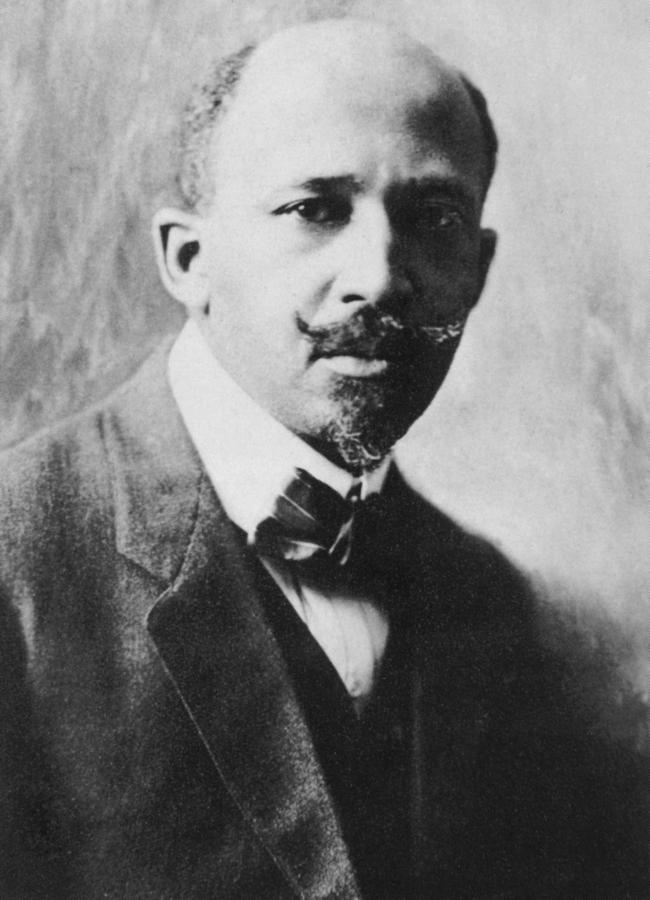 “As recently as November 1925, The New York Times had once again rejected his plea to capitalize Negro. Denial of upper-case existence in the newspaper of record merely affirmed symbolically the literal denial of the humanity of an entire race — token diminution that both reflected and sustained the cruelest beliefs and actions in the real world. The policy of the Times suited an era in which thirty-four ‘negroes’ were to be lynched in 1926. . . .”
“As recently as November 1925, The New York Times had once again rejected his plea to capitalize Negro. Denial of upper-case existence in the newspaper of record merely affirmed symbolically the literal denial of the humanity of an entire race — token diminution that both reflected and sustained the cruelest beliefs and actions in the real world. The policy of the Times suited an era in which thirty-four ‘negroes’ were to be lynched in 1926. . . .”
The Times editorialized on March 7, 1930:
“NEGRO” WITH A CAPITAL “N”
The tendency in typography is generally toward a lessened use of capital letters. Yet reverence for things held sacred by many, a regard for the fundamental law of the land, a respect for the offices of men in high authority, and certain popular and social traditions have resisted this tendency.
Races have their capitalized distinction, as have nationalities, sects and cults, tribes and clans. It therefore seems reasonable that a people who had once a proud designation, such as Ethiopians, reaching back into the dawn of history, having come up out of the slavery to which men of English speech subjected them, should now have such recognition as the lifting of the name from the lower case into the upper can give them.
Major ROBERT R. MOTON of Tuskegee, the foremost representative of the race in America, has written to THE TIMES that his people universally wish to see the word “Negro” capitalized. It is a little thing mechanically to grant, but it is not a small thing in its implications. Every use of the capital “N” becomes a tribute to millions who have risen from a low estate into “the brotherhood of the races.”
THE NEW YORK TIMES now joins many of the leading Southern newspapers as well as most of the Northern in according this recognition. In our “style book” “Negro” is now added to the list of words to be capitalized. It is not merely a typographical change; it is an act in recognition of racial self-respect for those who have been for generations in “the lower case.”
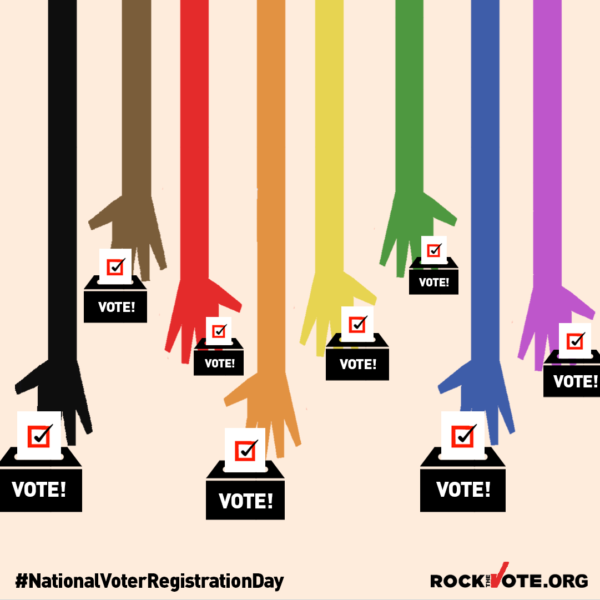
Rock the Vote, a nonpartisan organization that is working with businesses and influencers, has asked Journal-isms to help publicize its National Voter Registration Day, to take place Sept. 22.
Facebook users: “Like” “Richard Prince’s Journal-isms” on Facebook.
Follow Richard Prince on Twitter @princeeditor
Richard Prince’s Journal-isms originates from Washington. It began in print before most of us knew what the internet was, and it would like to be referred to as a “column.” Any views expressed in the column are those of the person or organization quoted and not those of any other entity. Send tips, comments and concerns to Richard Prince at journal-isms-owner@yahoogroups.com
View previous columns (after Feb. 13, 2016).
- Diversity’s Greatest Hits, 2018 (Jan. 4, 2019)
- Book Notes: Is Taking a Knee Really All That? (Dec. 20, 2018)
- Book Notes: Challenging ’45’ and Proudly Telling the Story (Dec. 18, 2018)
- Book Notes: Get Down With the Legends! (Dec. 11, 2018)
- Journalist Richard Prince w/Joe Madison (Sirius XM, April 18, 2018) (podcast)
- Richard Prince (journalist) (Wikipedia entry)
- February 2018 Podcast: Richard “Dick” Prince on the need for newsroom diversity (Gabriel Greschler, Student Press Law Center, Feb. 26, 2018)
- Diversity’s Greatest Hits, 2017 — Where Will They Take Us in the Year Ahead?
- Book Notes: Best Sellers, Uncovered Treasures, Overlooked History (Dec. 19, 2017)
- An advocate for diversity in the media is still pressing for representation, (Courtland Milloy, Washington Post, Nov. 28, 2017)
- Morgan Global Journalism Review: Journal-isms Journeys On (Aug. 31, 2017)
- Diversity’s Greatest Hits, 2016
- Book Notes: 16 Writers Dish About ‘Chelle,’ the First Lady
- Book Notes: From Coretta to Barack, and in Search of the Godfather
- Journal-isms’ Richard Prince Wants Your Ideas (FishbowlDC, Feb. 26, 2016)
- “JOURNAL-ISMS” IS LATEST TO BEAR BRUNT OF INDUSTRY’S ECONOMIC WOES (Feb. 19, 2016)
- Richard Prince with Charlayne Hunter-Gault,“PBS NewsHour,” “What stagnant diversity means for America’s newsrooms” (Dec. 15, 2015)
- Book Notes: Journalists Follow Their Passions
- Book Notes: Journalists Who Rocked Their World
- Book Notes: Hands Up! Read This!
- Book Notes: New Cosby Bio Looks Like a Best-Seller
- Journo-diversity advocate turns attention to Ezra Klein project (Erik Wemple, Washington Post, March 5, 2014)

